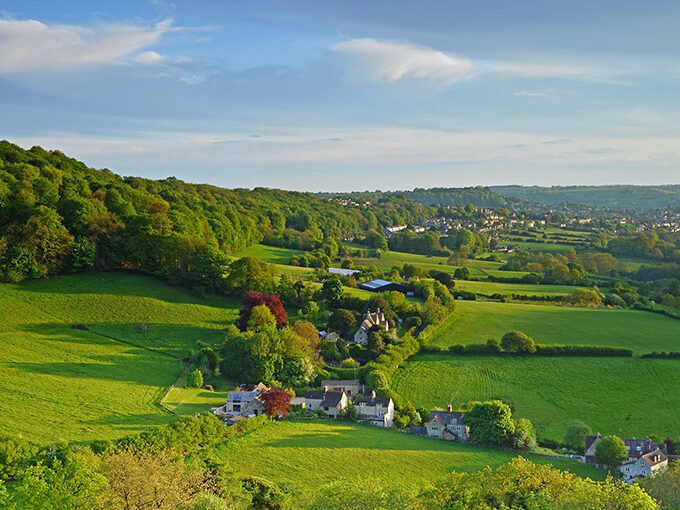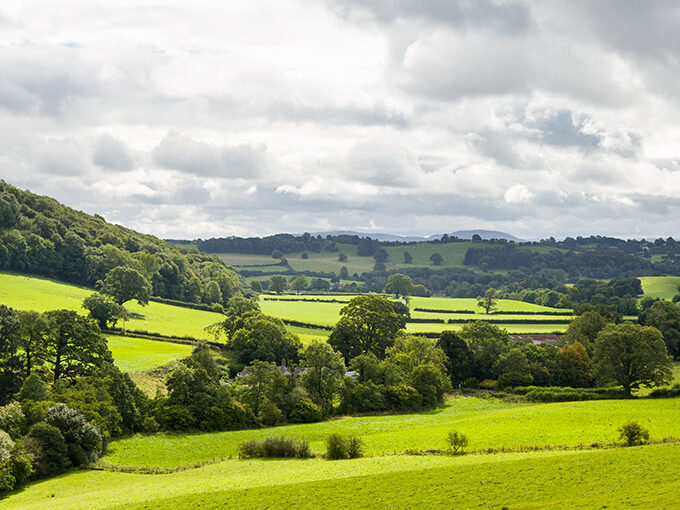Planting and growing trees retains an appeal for many landowners, and historically forestry has always been viewed as an opportunity where a tax advantage is available while delivering other benefits over time – for example, timber, habitat, or amenity.
This appeal may now be greater due to the upcoming changes to Business Property Relief (BPR) which were announced at the 2024 Autumn Budget. This, coupled with clarity from HMRC regarding woodland tax guidance offers an opportunity for landowners to re-consider commercial woodland as a potential business venture in order to make use of valuable tax reliefs.
Tree planting targets
The UK has a target to expand woodland cover to 16.5% in order to help respond to the climate change crisis and to meet net zero emissions by 2050. Whilst this target has been in the headlines again recently there is no doubt climate change will remain a strong focus and landowners have a critical part to play. Taking action in this area will be critical to meet these targets and there are a range of suitable grants and incentives available.
However, despite these incentives, current uptake on woodland creation has been mixed, with 20,660 hectares planted annually in the UK. In England, planting rates have increased from 3,130 hectares in 2022-23 to 4,550 in 2023-24. In Scotland, rates have also increased from 10,480 hectares to 20,660 during the same period.
Clearly, the rising rates are positive, but the UK-wide figure is still 10,000 hectares below the independent Climate Change Committee target of 30,000 hectares of new woodland creation each year. The potential tax opportunities available could be the kick-start needed to help achieve the set goals.
Tax and woodland
In respect of woodland planting, HMRC doesn’t regard all such activity as automatically being eligible for advantageous tax benefits. Landowners should ensure that they are aware of the requirements and how best to position themselves to ensure they’re obtaining the available reliefs where appropriate.
The most important test in determining whether tax relief is available from planting trees is in establishing that the woodlands are commercial – in other words, managed with a view to profit. This can be challenging given the long-term nature of the trade, with costs and income often falling in different tax years. Evidence to support commercial activity can take a number of forms, for example: minutes of meetings, preparation of annual budgets, active management (such as the employment of a professional forester), a separate bank account, VAT registration and separate P&L in the annual accounts.
The main areas where commercial woodland have beneficial tax treatment are in relation to income and corporation tax, capital gains tax (CGT) and inheritance tax (IHT).
Income and corporation tax
For income and corporation tax, if woodland passes the commercial test, then profits from the sale of timber are exempt from both taxes, but the converse is that no loss relief is allowable against other income. Similarly capital allowances cannot be claimed on capital expenditure incurred on plant and machinery in connection to the commercial woodlands.
Certain carbon offset payments are also capable of being regarded as part of the occupation of the woodland and not chargeable to income tax.
There are exceptions, such as Christmas trees which are usually grown as a crop and fall within the statutory definition of market gardening rather than commercial woodland so profits from this business remain taxable.
Inheritance tax
In terms of IHT, provided the commercial test has been passed, woodland should attract 100% relief via BPR – although it should be noted that land switched out of agriculture will no longer qualify for Agricultural Property Relief (APR) unless it is ancillary to farmland and the shelter belt criteria are met. However, as highly publicised, there is now a cap on APR and BPR relief available at 100%, with qualifying assets over £1 million only obtaining relief at 50%.
In the event that neither BPR or APR apply then the Deferral Relief Scheme (Woodland Relief) may be available, meaning that IHT on the timber value is deferred on death whilst the woods are growing until after the timber is either felled or sold. The rationale behind this treatment is that growing trees may take several generations to mature and as such deferring any IHT charge is deemed fair in this position and Woodlands Relief ensures that IHT is not charged on successive deaths during this time.
Capital gains tax
A sale of land and the crop together attracts CGT on the solum or land element only, often a low element of the whole. Succession planning measures such as gifts of commercial woodland during lifetime attract CGT holdover relief and IHT can be covered by BPR. However, this relief is now limited, and the gift will count towards an individual’s £1 million allowance in the event of a failed gift where the individual dies within 7 years of the gift.
Types of woodland
As woodland creation becomes more prevalent due to the variety of grants and uses available, the tax treatment of the woodland becomes more complex. Below are some of the types of woodland seen in practice and HMRC’s opinion on their tax treatment.
Amenity woodland
Amenity woodland is typically not seen as a commercial venture by HMRC and as such is not eligible for the tax exemptions outlined. However, if the woodland is ancillary to agricultural land, such as woodland shelter belts or grown as fencing materials, there is potential for the woodland to be eligible for APR and BPR.
Short rotation coppice
Where high-yielding varieties of willow or poplar are harvested over a short cycle (typically 2 to 5 years), then this is considered a farming operation by HMRC and not eligible for the commercial woodland exemptions for income tax and CGT.
Similarly, for IHT purposes Woodland Relief on short rotation coppice would likely not be available, but the crop may be eligible for APR.
Ancient woodland and woodland sites of special scientific interest
Ancient semi-natural woodlands could be eligible for conditional exemption and included on the inventories of Ancient Woodland kept by Natural England. Applications can be made to Natural England and HMRC for woodlands to be considered a National Heritage site for the benefit of the public. The bar for being eligible for conditional exemption is set high and there are conditions and undertakings that must be agreed with HMRC to be eligible for this treatment, including public access and maintenance of the site. Entering into conditional exemption agreements should be carefully considered, particularly given the commitment to undertakings required. However, if a conditional exemption application is successful and undertakings adhered to, IHT on the woodlands would be deferred.
For more information on woodland creation and the tax opportunities available, please get in touch with Erica White.
Contact Us
Senior Manager, Leeds
Key experience











